I first make a plot
df <- data.frame(x = c(1:40, rep(1:20, 3), 15:40))
p <- ggplot(df, aes(x=x, y = x)) +
stat_density2d(aes(fill='red',alpha=..level..),geom='polygon', show.legend = F)
Then I want to change the geom_density values and use these in another plot.
# build plot
q <- ggplot_build(p)
# Change density
dens <- q$data[[1]]
dens$y <- dens$y - dens$x
Build the other plot using the changed densities, something like this:
# Built another plot
ggplot(df, aes(x=x, y =1)) +
geom_point(alpha = 0.3) +
geom_density2d(dens)
This does not work however is there a way of doing this?
EDIT: doing it when there are multiple groups:
df <- data.frame(x = c(1:40, rep(1:20, 3), 15:40), group = c(rep('A',40), rep('B',60), rep('C',26)))
p <- ggplot(df, aes(x=x, y = x)) +
stat_density2d(aes(fill=group,alpha=..level..),geom='polygon', show.legend = F)
q <- ggplot_build(p)
dens <- q$data[[1]]
dens$y <- dens$y - dens$x
ggplot(df, aes(x=x, y =1)) +
geom_point(aes(col = group), alpha = 0.3) +
geom_polygon(data = dens, aes(x, y, fill = fill, group = piece, alpha = alpha)) +
scale_alpha_identity() +
guides(fill = F, alpha = F)
Results when applied to my own dataset
Although this is exactly what I'm looking for the fill colors seem not to correspond to the initial colors (linked to A, B and C):


